

Ben Zachariah
CarExpert's top five ute reviews of 2025
24 Hours Ago
The 2020 Nissan Navara ST is a quiet and refined ute with excellent fuel economy and toughened-up looks, but there are still areas that could be better.
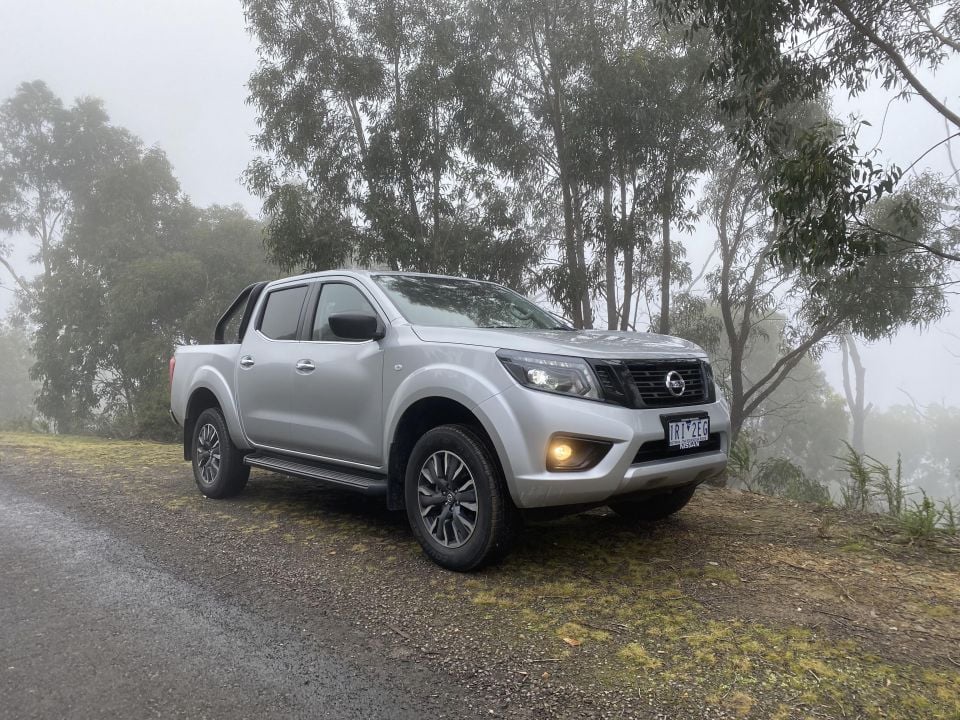
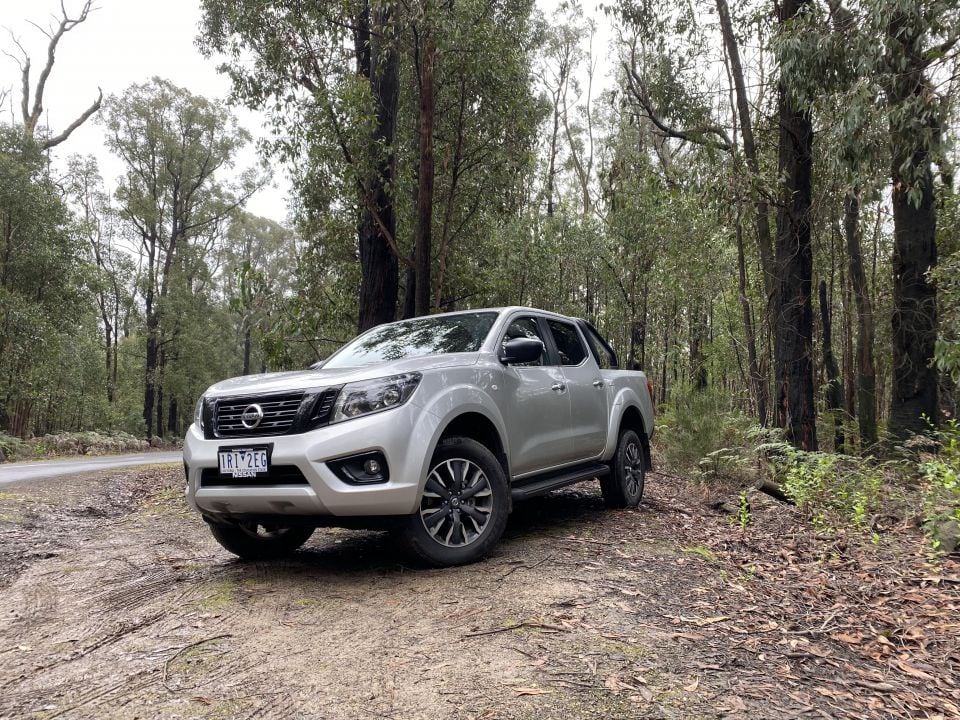

Senior Contributor
New from
$26,850
excl. on-roads

Senior Contributor
New from
$26,850
excl. on-roads


Senior Contributor
New from
$26,850
excl. on-roads

Senior Contributor
New from
$26,850
excl. on-roads
Quickly see how this car stacks up against its competition. Select any benchmark to see more details.
Where expert car reviews meet expert car buying – CarExpert gives you trusted advice, personalised service and real savings on your next new car.
The ‘D23’ Nissan Navara has been given more running updates than most during its five years on sale. We’re up to the ‘Series 4’ model now, for those playing at home.
On the one hand this suggests that its maker identified the flaws in its original product: heavy steering and rear suspension load-bearing chief among them. On the other it speaks volumes that Nissan sought to fix them. For the most part, it steadily has.
Nissan’s latest running tweaks modernised the infotainment system and reduced noise, vibration and harshness (NVH) intrusion into the cabin. Already one of the more (dare we say it) SUV-like pickups out there, Nissan considers the MY20 iteration’s refinement gains to be “significant”.
But for the mid-range ST grade revisited here the changes were also stylistic. It now gets an in-vogue blacked-out grille, mirror caps and sports bar, and black alloy wheels that are 18 inches in diameter – two inches bigger than before. So in a market where mods reign, it has some out-of-the-box presence already.

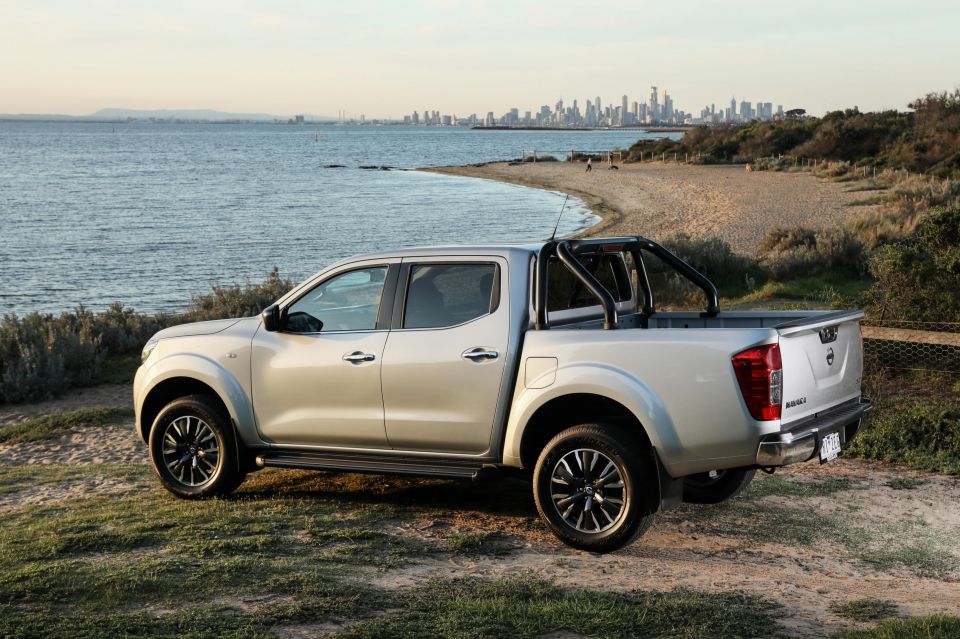
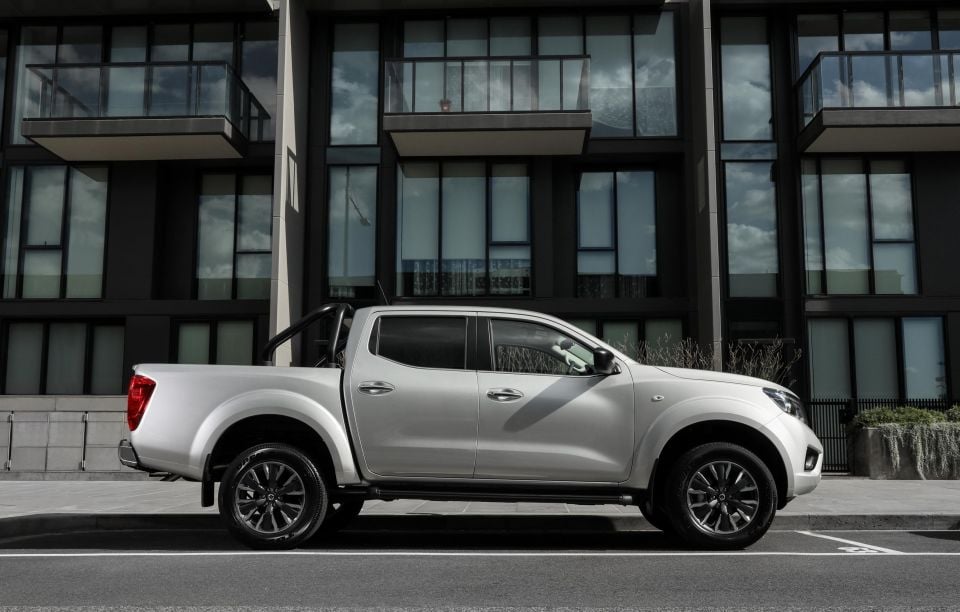
Honestly I’m not certain why ute manufacturers persist with recommended retail prices (RRP) that are not reflective of real-world pricing. Nissan is but one of several offenders here.
The Nissan Navara ST 4×4 lists at $48,750 before on-road costs (ORC) with a manual gearbox or $51,250 with the automatic as tested here. Yet a visit to Nissan’s site shows deals on the pre-facelift ST dual cab auto pricing the car as low as $42,490 drive-away. Yes that’s a runout price, but let’s be realistic: the MY20 is not a $10,000-$15,000 superior vehicle.
The Navara’s typical positioning is to wear a premium over the Mitsubishi Triton but to undercut the top-selling Ford Ranger and Toyota HiLux, and we see no reason why this won’t continue.
For context, the ST’s chief rivals include the HiLux SR (listed at $49,515 before ORC/but offered at $46,990 drive-away on Toyota’s website), Ranger XLS ($52,090 before ORC/$46,490 drive-away on Ford’s website), Triton GLS ($47,940 before ORC/$44,790 on Mitsubishi’s website), and Volkswagen Amarok Core V6 ($52,590 before ORC/$48,990 drive-away on Volkswagen’s website).
The Holden Colorado and Mercedes-Benz X-Class are both dead and gone, and there are new Isuzu D-Max and Mazda BT-50 twins imminent but not yet priced.
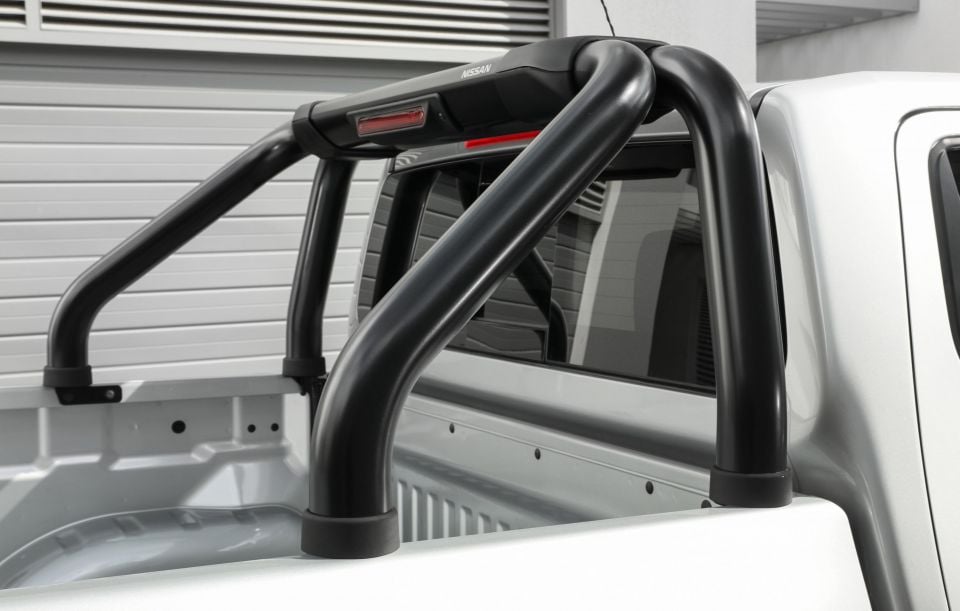
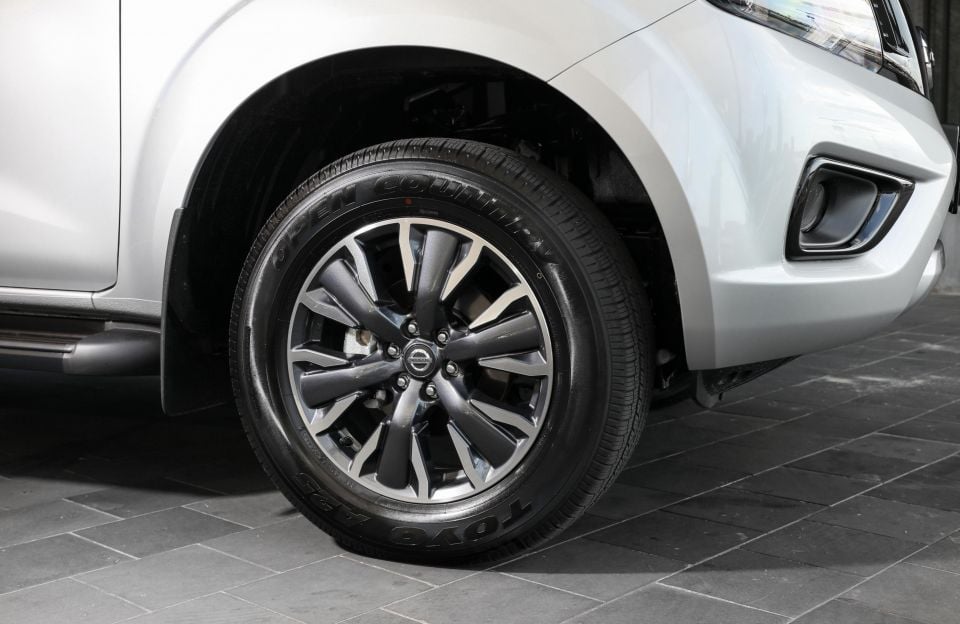
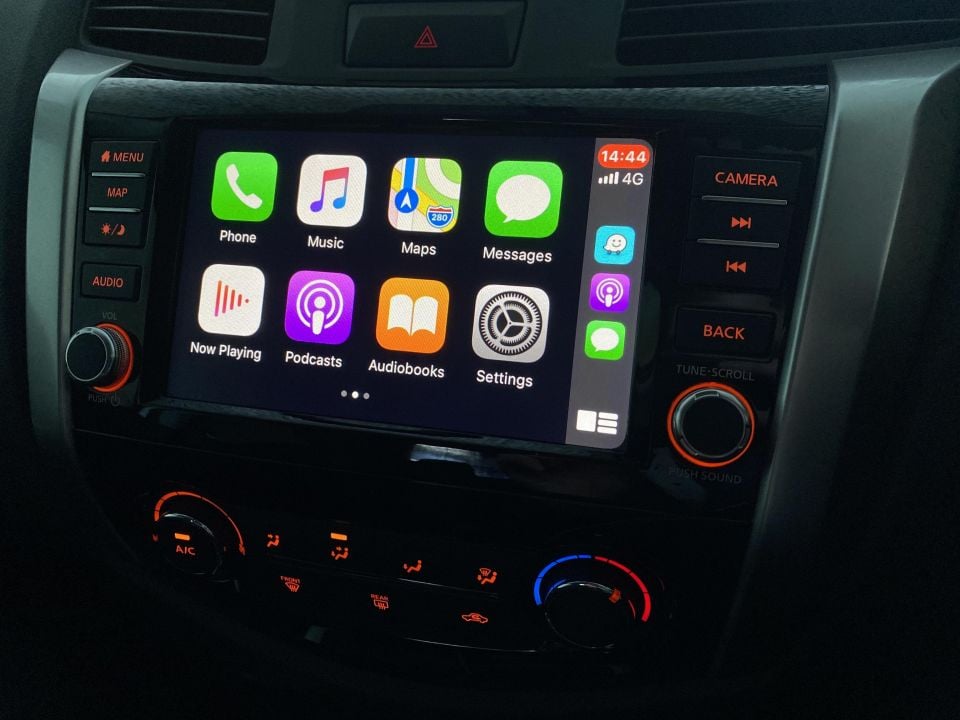

Buy your new car without the stress. It's fast, simple and completely free.

Great service from Travis and team, second time I have used this business would not hesitate to recommend them to anyone
Craig C.
Purchased a Ford Ranger in Sunshine Coast, QLD
CarExpert helped Craig save thousands on his Ford Ranger, now let us save you on your next new car.
Find a dealOn the outside you get 18-inch wheels shod with Toyo Open Country tyres, a black sports bar with stop light, privacy glass for the rear windows, a sliding back window, LED projector headlights, fog lights, side steps, plus four tie-down points and a 12V socket in the tub.
The seats are trimmed in cloth and floors in hard-wearing carpet, the driver gets height adjustment as well as sliding, and amenities include cruise control, manual air-conditioning controls, six speakers, audio and cruise controls on the steering wheel, a digital speedo, USB and 12V sockets, and Bluetooth streaming.
The new centre touchscreen is 8.0-inches, and displays a reversing camera, factory satellite navigation, and Apple CarPlay/Android Auto phone mirroring. There’s no digital radio though.
If you want mod cons like leather seats, a tub-liner with attachment rails, a 360-degree camera, or a class-exclusive sunroof, you need to step up into the Navara ST-X.

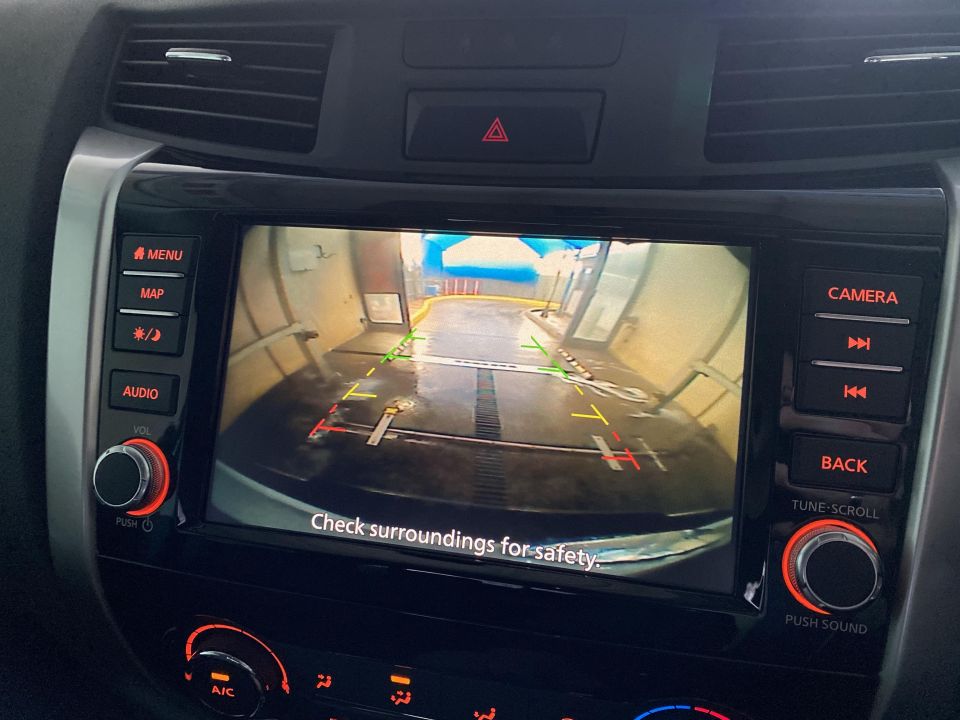
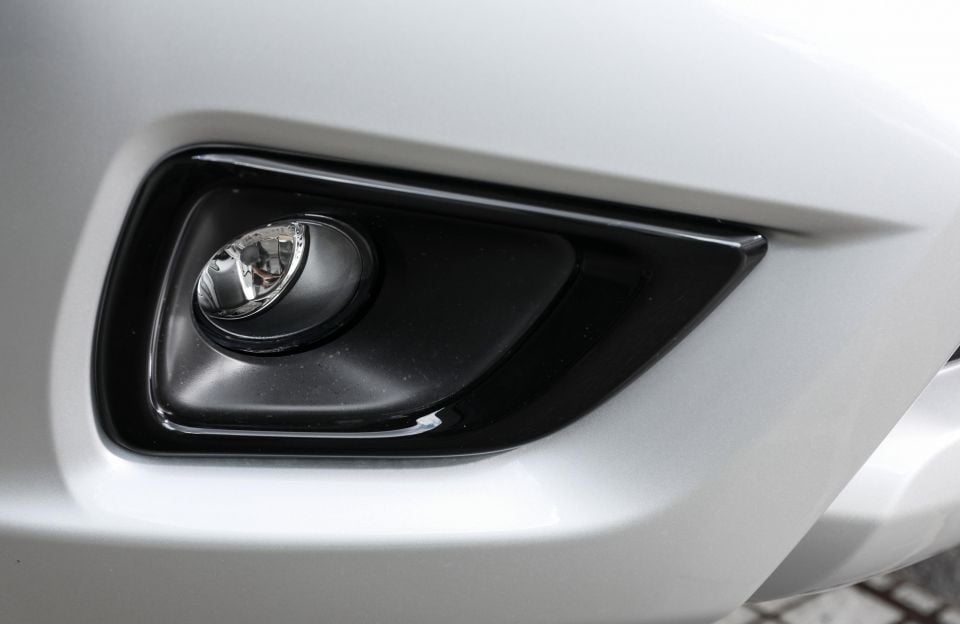
You get seven airbags including side curtains for the rear occupants, and the requisite stability control system.
ANCAP awarded the Nissan Navara the maximum five stars against 2015 criteria, managing 35/37 for passive occupant protection.
However it wouldn’t replicate this if re-tested today as it lacks active safety features such as autonomous emergency braking, lane-departure alert, blind-spot monitoring, and cross-traffic alert.
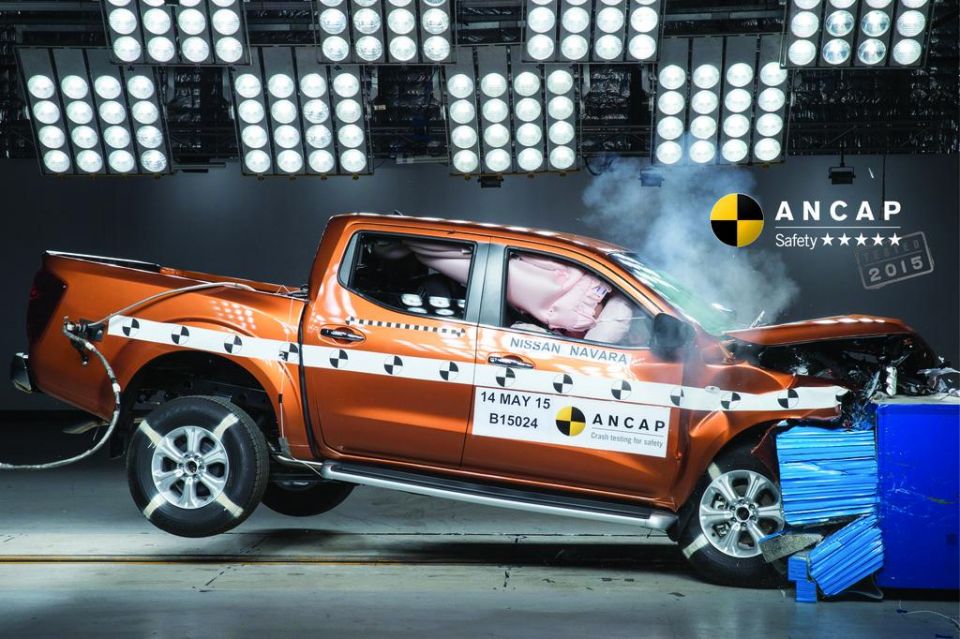
These functions are becoming common in the ute market, and can be found in the Triton, HiLux, and Ranger, and are also available on the Navara in overseas markets such as Europe.
For those planning on using the Nissan Navara as a family car, there are two rear ISOFIX child seat anchors, and a centre-mounted fabric loop for the top-tether point, which works in tandem with the metal poles in each outboard headrest.
This solution seems less desirable than welded metal latch points mounted into the seat backs, which you’d find in a Triton.

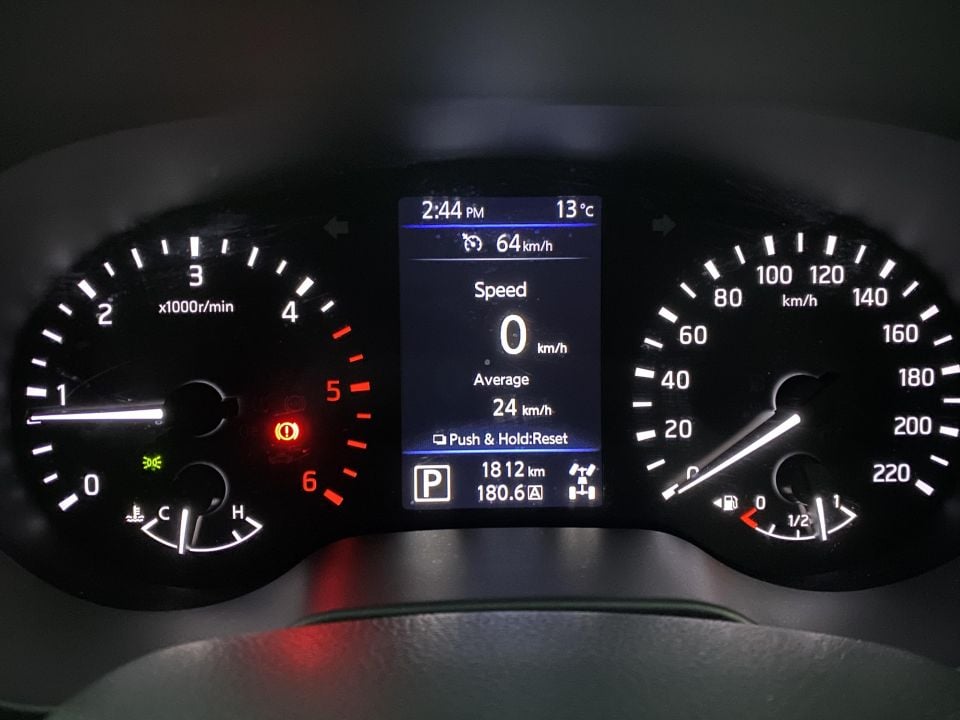

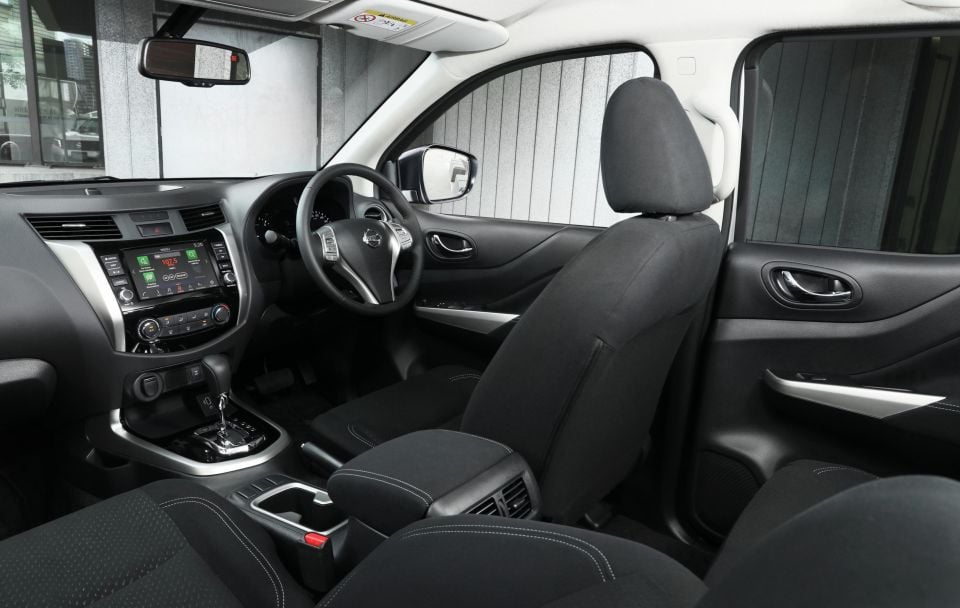
The Nissan Navara’s interior feels really well put together, and is constructed of hard-wearing materials that don’t feel flimsy or scratch-prone like those in many competitor models. In terms of sophistication in this specific area, it’s top of class.
The seats are trimmed in soft cloth, there’s a handy digital speedo, and the rear-view mirror is auto-dimming and has an integrated compass. The air-conditioning and 4×4 system are controlled by dials and/or buttons.
The new centre screen is larger than the pre-facelift unit, though it’s still flanked by the same fascia design and the same shortcut buttons. This unit was developed by the Renault-Nissan-Mitsubishi Alliance, and displays good-quality maps and a reversing camera with guidelines.
The addition of Apple CarPlay and Android Auto is most welcome, because these systems make it was easier to scroll through your Spotify and Apple Podcast streaming services, and let you use Google Maps or Waze with constant live updates.
It’s a shame the system proved to be a little buggy though. It froze up on me a few times after plugging my phone in, and not even turning the car off and on again fixed it. The screen then went black and didn’t work briefly, before suddenly working normally again.
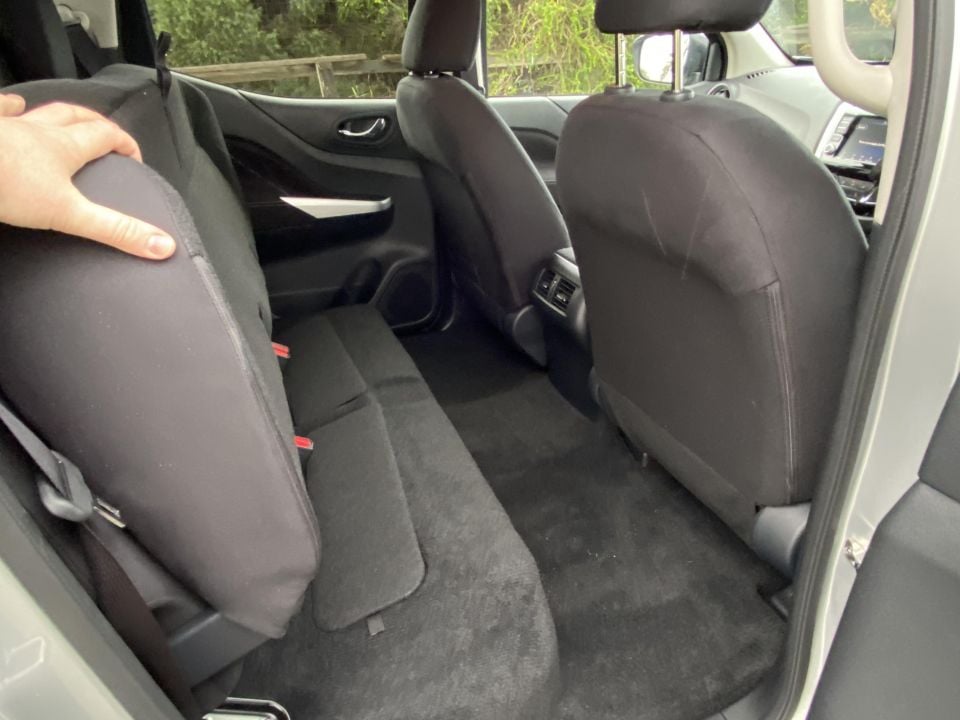
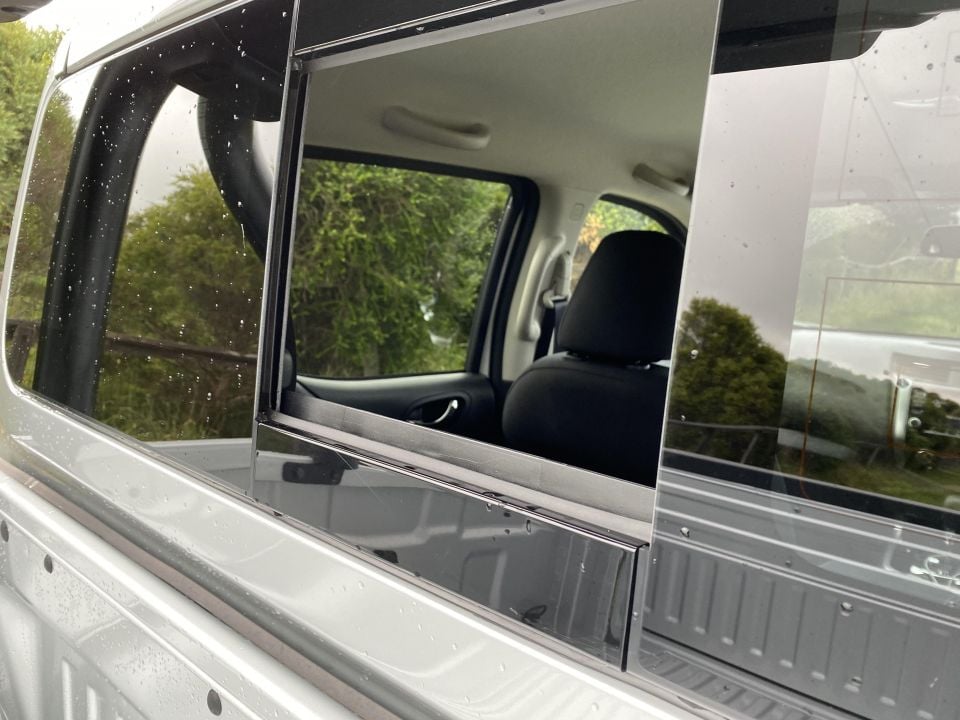
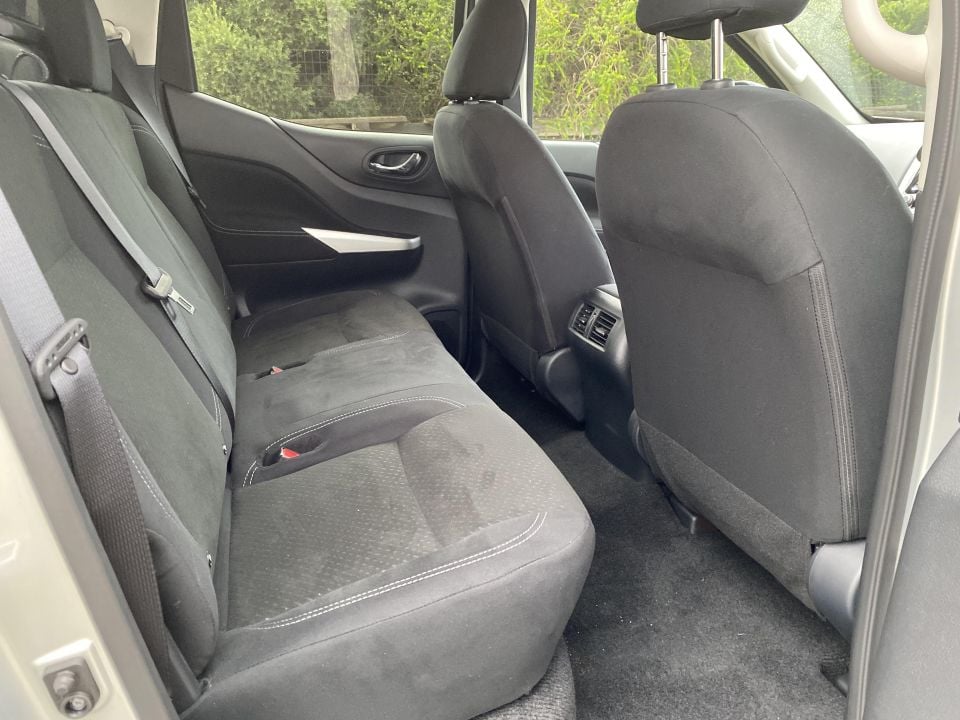
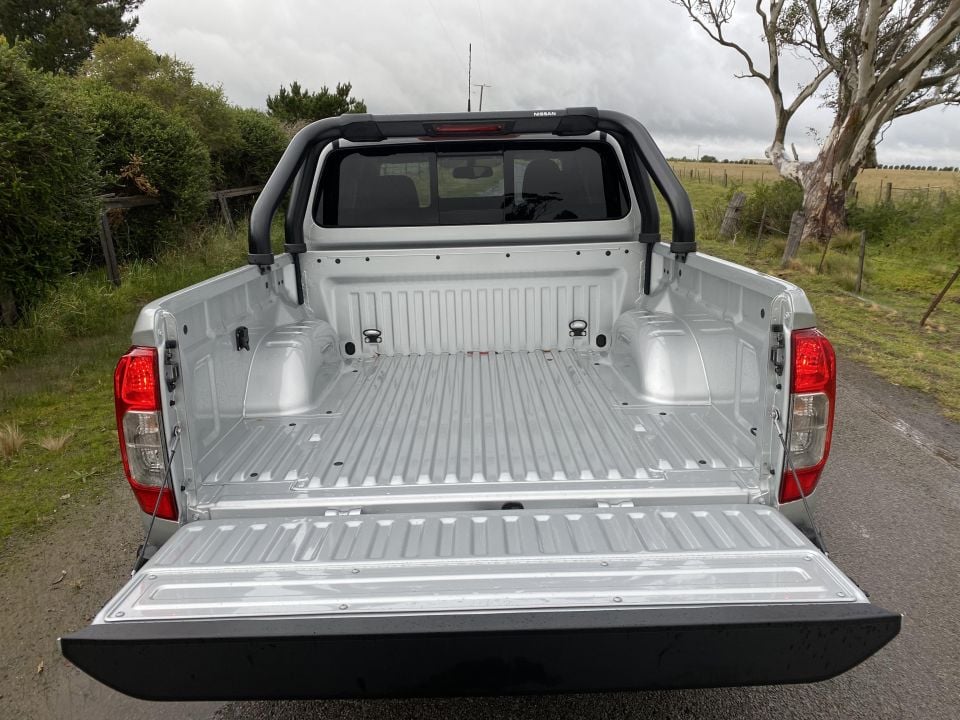
We’ll put this down to teething issues for now, and hope it doesn’t happen again.
There’s not a heap of storage areas, though you get helpful cup holders under each outboard vent, a shallow cubby atop the dash with a 12V integrated, a smallish console, door bins, and two cupholders along the transmission tunnel.
The main ergonomic grief I found comes from the frustrating lack of telescopic reach adjustment for the steering wheel, and the limited height settings for the seat. As such, I had to sit too close to the wheel for my long legs to be perfectly comfortable, and couldn’t see the instruments in their entirety.
The steering wheel has a pretty thoughtless design, with the horn sensor active right at the bottom of the wheel rim meaning I accidentally honked numerous times when turning through roundabouts. I know I’m not the only person who’s experienced this in a Navara…
The back seats offer less legroom than a HiLux, Ranger or Triton, but headroom and actual seat comfort are good, you get rear vents, folding arm rests, and a novel electric sliding window behind you. It’s an ideal slot for your dog to stick his head out, at the very least.
The tub measures 1500mm long, 1560mm wide (1130mm between the arches though), and is 474mm deep. The tailgate opening is 1360mm. Payload is an acceptable 968kg, including passengers.


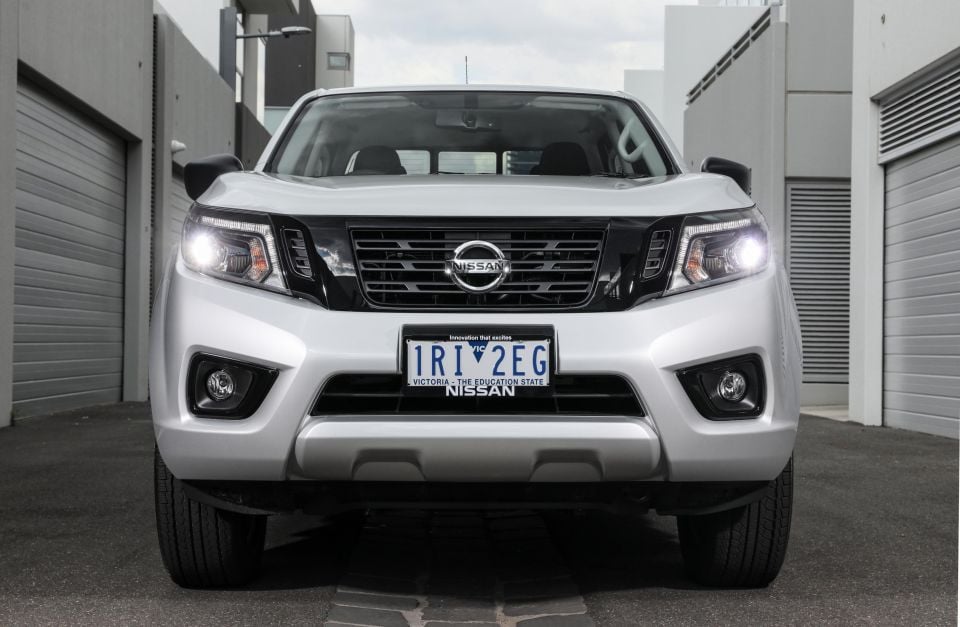
The Nissan Navara’s 2.3-litre diesel engine has two turbos that operate at different engine speeds, and middle-of-the-pack outputs of 140kW at 3750rpm and 450Nm between 12500 and 2500rpm.
It’s mated in this test car to a seven-speed automatic transmission with manual mode, and a part-time 4×4 system with 2H, 4H and 4L low-range operating modes, the latter activated through an electronically actuated transfer case.
Maximum towing capacity is the requisite 3.5 tonnes that most rivals manage, though the maximum download rating listed is 300kg, and claimed combined-cycle fuel use is an impressively low 7.0 litres per 100km. The 80L tank therefore promises a driving range above 1100km between refills.
The engine’s strongest point is its refinement, with clattering and vibrations kept low compared to something like an Isuzu D-Max. At 1940kg unladen, the Navara is quite a light pickup, and the engine has no issue scooting along. The ratios are also closely-spaced for improved smoothness as well.
My combined-cycle 3.5-hour drive yielded economy of 8.6L/100km, which isn’t close to the claim but remains very good for a ute in this segment nevertheless.
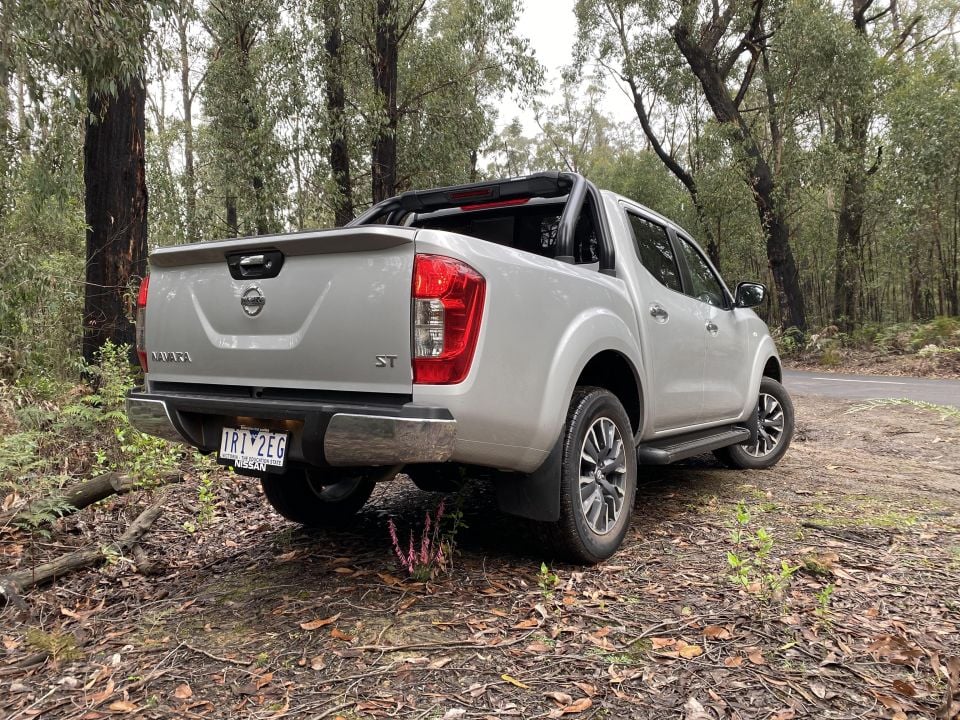
The most I’ve towed with a Navara using this engine is a 2.2-tonne caravan up some gravel hills, and while it lacked the effortlessness of a D-Max, it felt a match for a HiLux and a Triton when doing so.
The Nissan Navara’s dynamic point of different is its two-stage coil rear suspension with linkages, rather than the de rigeur leaf springs. Early iterations of the D23 Navara sagged notably when laden, but I’ve carried 650kg weights easily in the post-update model.
It’s also quite a comfortable pickup when unladen, or lightly laden, with less of that typical skipping and bouncing from the tub over uneven or cobbled surfaces. The suspension is simply better-equipped to maximise tyre contact with the road.
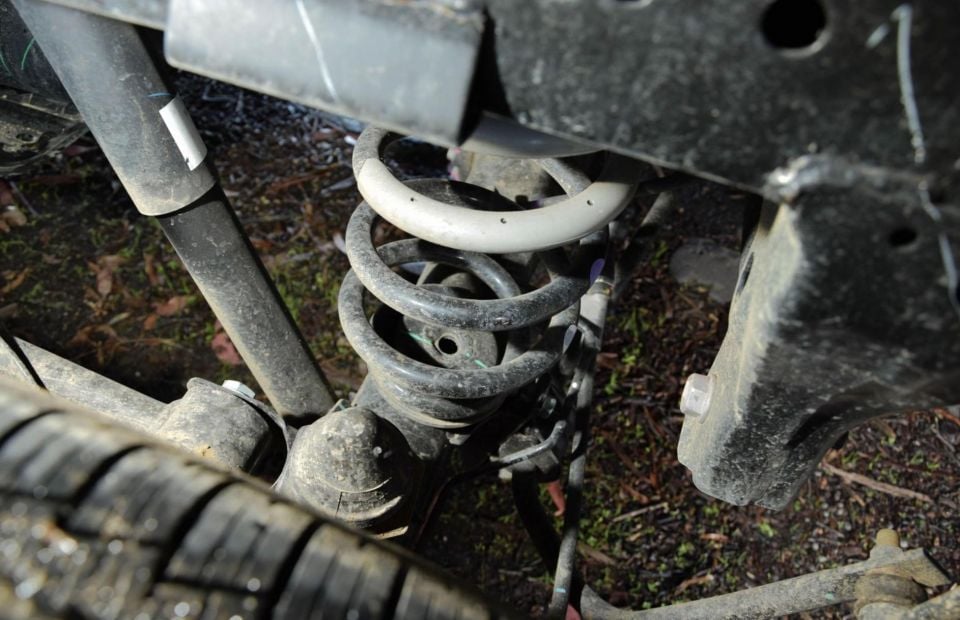
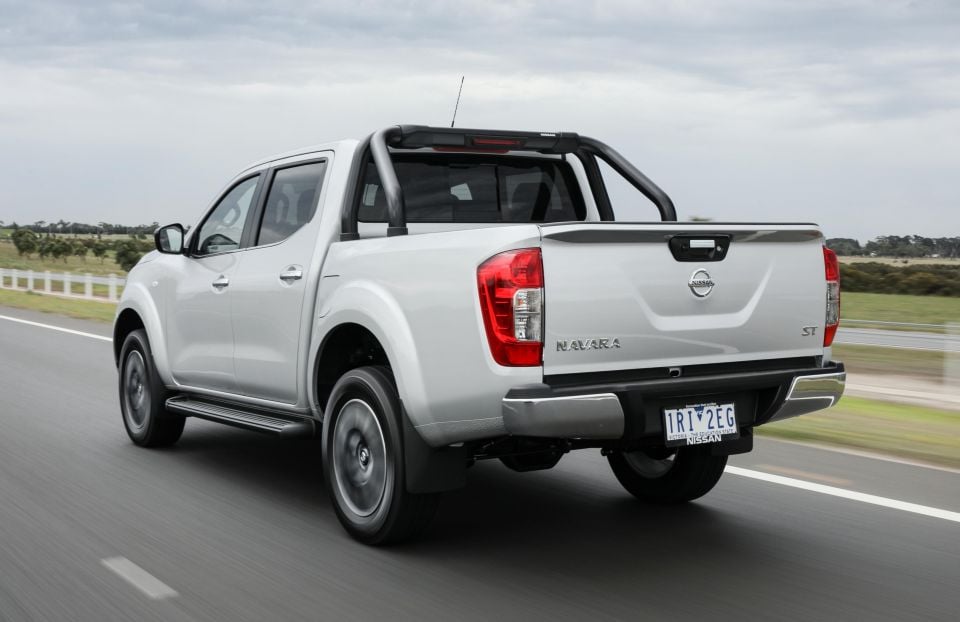
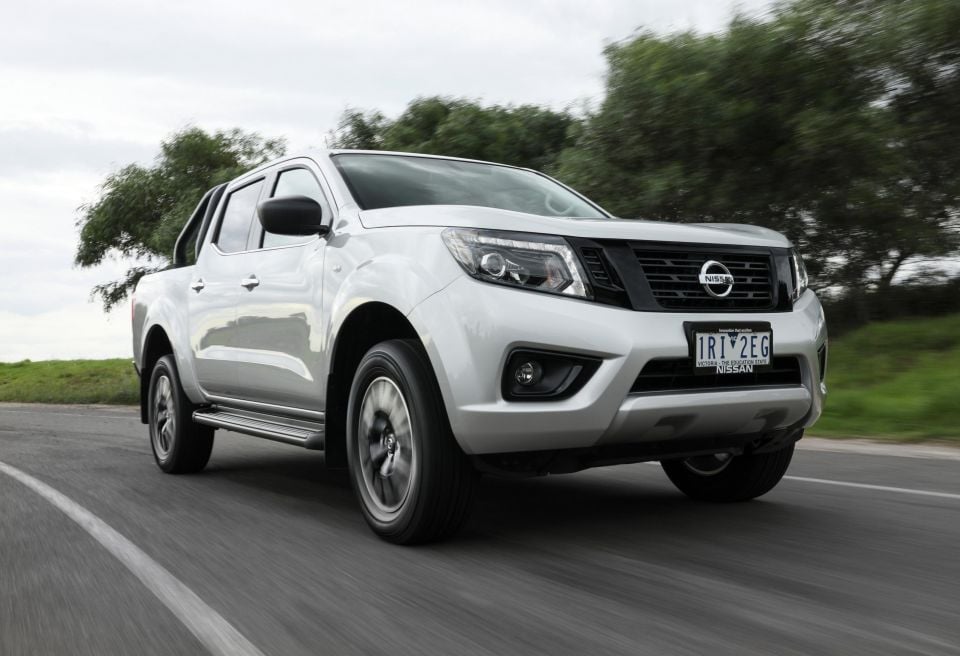
If you’re someone looking to buy a pickup as a lifestyle machine, that feels a bit like an SUV with a tray, then the Nissan is quite a capable option.
Another area that Nissan fixed since the original D23 launched is the hydraulically-assisted steering, which is lighter and less unwieldy than it once was, greatly improving its performance in urban conditions or off-road.
In terms of off-road prowess, there’s a locking rear differential to stop freewheeling, while Nissan cites ground clearance of 228mm, a breakover angle of 24.7 degrees, an approach angle of 33.2 degrees, and a departure angle of 28.2 degrees.
Given the typical user, we thought a separate review focused purely on off-roading in this very Navara made sense. This piece will be running very shortly, and we will link to it once it does.
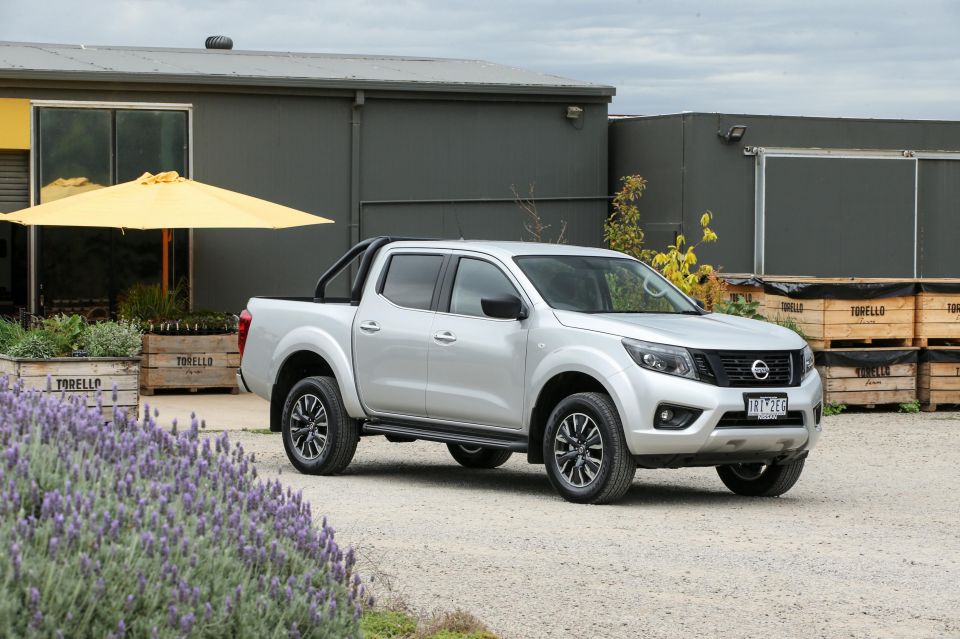
All Nissans come with a five-year and unlimited kilometre warranty, with free roadside assist across the term that includes 24-hour help, emergency fuel, and towing.
Servicing intervals are a long 12 months or 20,000km, double those of a HiLux (six months/10,000km). However it’s not that cheap to maintain. The first six visits are capped at: $526, $563, $727, $585, $570 and $798. Total cost over six years or 120,000km is $3769, plus $32 for new brake fluid every two services.
For context, each of the HiLux’s first four services is $250, so $1000 for the first two years. Six years of servicing a Ranger (12 month/15,000km intervals ) costs $2511 including new brake fluid at 45,000km, while three years of Triton servicing at the same 12 month and 15,000km intervals costs $897.
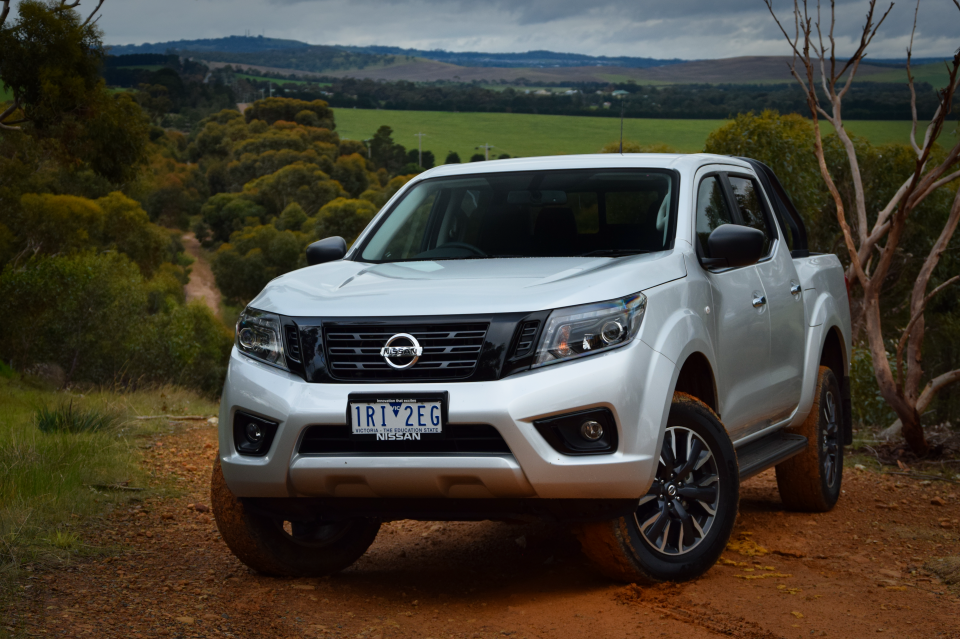
The Nissan Navara has been recipient to numerous updates since it launched, and each has made it better. The ride comfort, its ability to handle loads, its steering weight, the infotainment, all have been improved.
What is now on sale is a handsome, quiet, well-made and comfortable pickup for the most part, with a definite lifestyle bent that’s nevertheless quite capable.
If only Nissan nailed driver ergonomics, service costs and active safety technology, it’d have something right at the head of the class. But provided you get a sharp price, there are plenty of reasons to go kick the tyres on this ST anyway.
Where expert car reviews meet expert car buying – CarExpert gives you trusted advice, personalised service and real savings on your next new car.


Ben Zachariah
24 Hours Ago


Matt Campbell
1 Day Ago


Derek Fung
5 Days Ago


Damion Smy
8 Days Ago


Ben Zachariah
10 Days Ago


James Wong
16 Days Ago